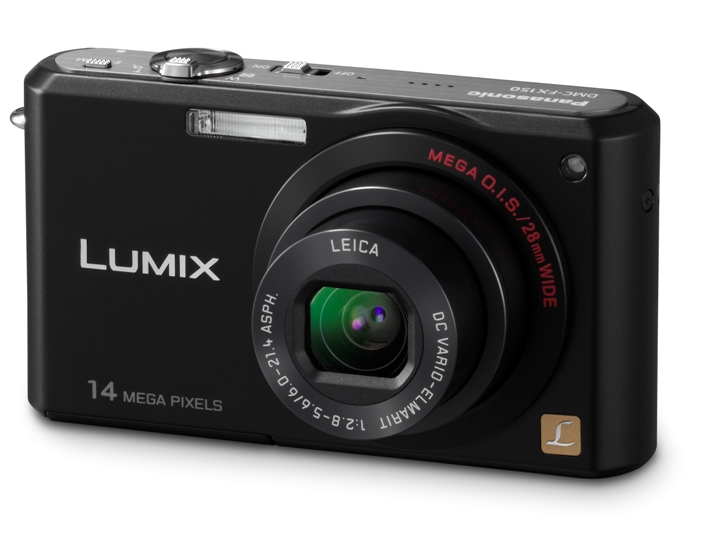TechRadar Verdict
An attractive compact with a quality lens, but it's let down by excessive noise and an unreliable 'Intelligent Auto' mode
Pros
- +
Leica optics
- +
Great build quality
- +
RAW support
Cons
- -
Noise
- -
More noise
- -
Meddling Intelligent Auto
Why you can trust TechRadar
It's no secret that Panasonic and Leica have been sharing much of their compact camera designs for a few years now, and the FX150 shares an almost identical design and button placement to the Leica C-Lux 2.
Though the finer details aren't as iconic, the FX150 still features fantastic build quality, with a solid metal body and retro-styled buttons and sliders.
And then there's that jet-black Vario-Elmarit Leica lens, with its authentic white text. It's as if Panasonic has taken a bog-standard compact and stuck a 50 year old Leica rangefinder lens on the front, and the result is a mishmash look that's hard not to love.
Optically, it's everything you'd expect from the famous lens manufacturer. What's behind it, however, isn't half as impressive.
Little brother to LX3
With its new LX3, Panasonic chose to increase the dimensions of the sensor rather than increase the number of megapixels; a great step towards lower noise, and a welcome change from incessant pixel chasing.
With the FX150, it's as if Panasonic has discarded this way of thinking entirely; last year's FX100 boasted an eyebrow-raising 12 megapixels, so moving to a whopping 14 makes even less sense - other than to offer a lifeline to struggling sales assistants.
A lot has been made of Panasonic's 'Intelligent Auto' mode - this brings together a number of functions seen in various current compacts, as well as a few new tricks. It's designed to do everything it can to increase your chances of taking spontaneous shots that are correctly exposed and blur-free, and for the most part, it does this very well.
The Intelligent Scene Detector, for example, determines exactly what you're trying to take a picture of and adjusts settings to match. City skyline at night? 'Night Landscape' mode is automatically selected, disabling the flash and boosting the sensor's sensitivity.
Intelligent auto functions
Point the camera at someone's face and it'll enable face tracking and flash with red eye reduction. Trying to photograph a moving subject? The Intelligent ISO function will automatically boost image sensitivity if movement is detected.
This worked well in the majority of cases, though lens flare in bright sunlight seemed to confuse the Intelligent ISO system, causing it to boost sensitivity to ISO 800 - usually reserved for night shots - and resulting in noisy, washed out images.
Also in this mode is Focus Tracking - frame your subject dead-centre and hit the Focus Tracking button, and the camera will place a crosshair on the object, tracking it around the frame as you compose your shot. It's a neat feature that does its job admirably.
Other modes include Manual, which provides semi-manual control (you're not able to select any F-stop/shutter combination you like) over the exposure, and a Scene mode.
Scene modes
This provides far more scene modes than you'll ever use - 24, in fact - including some questionable ones such as 'transform > slim', which stretches the image horizontally in order to make your subject appear slimmer.
The resulting image would be more at home in a fairground hall of mirrors, but Panasonic's commitment to addressing the body image concerns of the naïve and the self-conscious is at least slightly commendable.
More plausible modes include 'pinhole', which introduces a heavy vignette and realistic film grain to the image, and 'aerial photo', designed for shots out of plane windows - though only after you've agreed to the camera's warnings to stow it during takeoff and landing, and to listen to your flight attendant.
Perhaps most surprising for a mid-range compact is the inclusion of RAW support, offering a good deal more flexibility over how your shots turn out than in JPEG.
Sadly, no amount of 'pro' features and artificial intelligence can overcome this camera's noise issues. Mix a small sensor with such a ludicrously high pixel count and you've a recipe for noise cocktail - so it's no surprise that any images taken at above ISO 800 border on unusable.
This is only made worse by the FX150's slightly aggressive in-camera sharpening. And with the Intelligent ISO system having a seeming passion for boosting the sensitivity as high as possible when it's not required, you could end up with a memory card full of fuzzy shots. It's just one of many quirks we found in the camera's intelligence that all but ruined the outcome of some great shots.
It's so eager to help and show off its intelligence, but its resulting actions feel a little like meddling. It's a bit like driving an automatic car - when it works, it's beautifully easy, but get to a steep hill or fast junction and you'll ache for a little more control.
Via PhotoRadar
